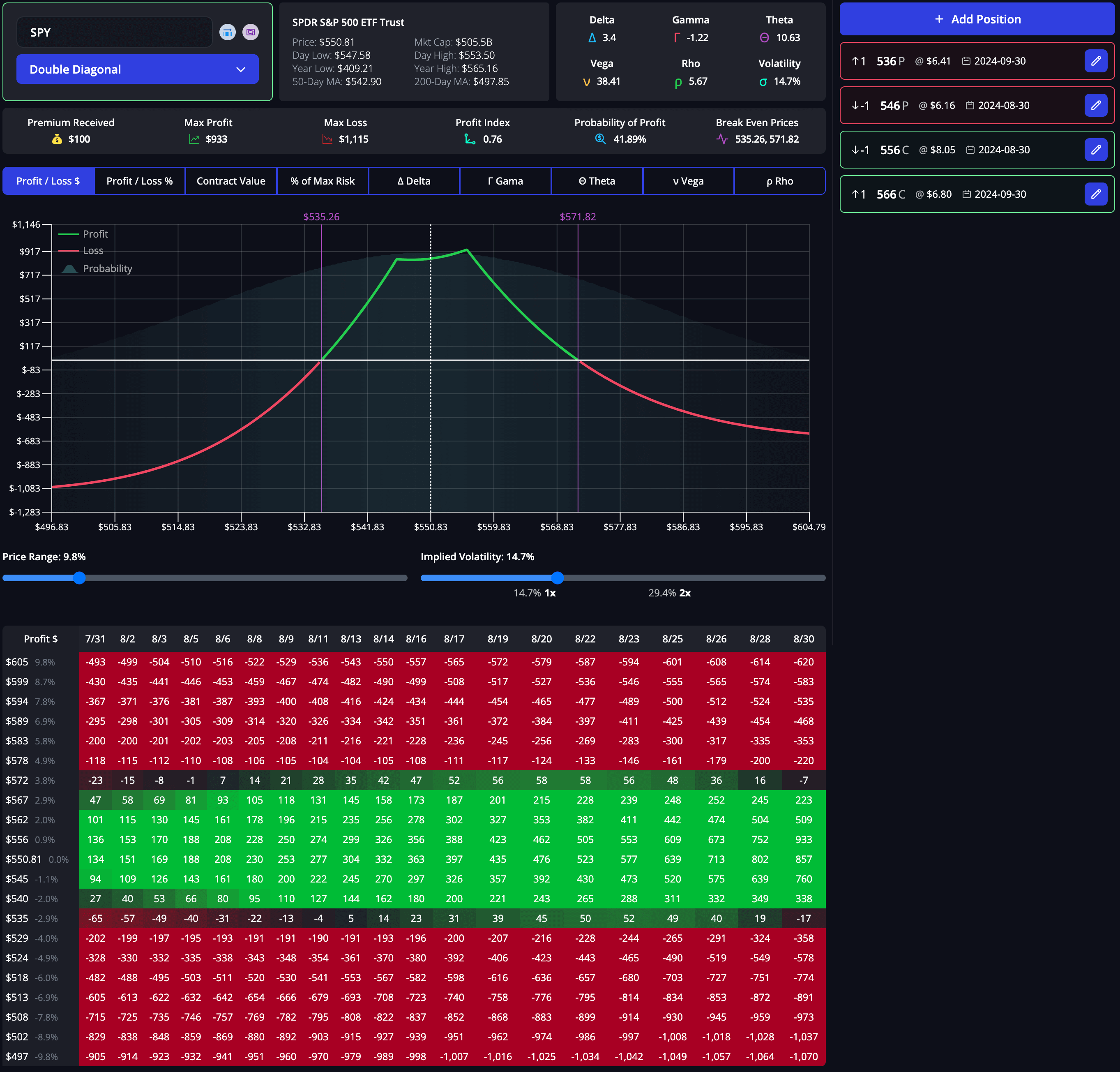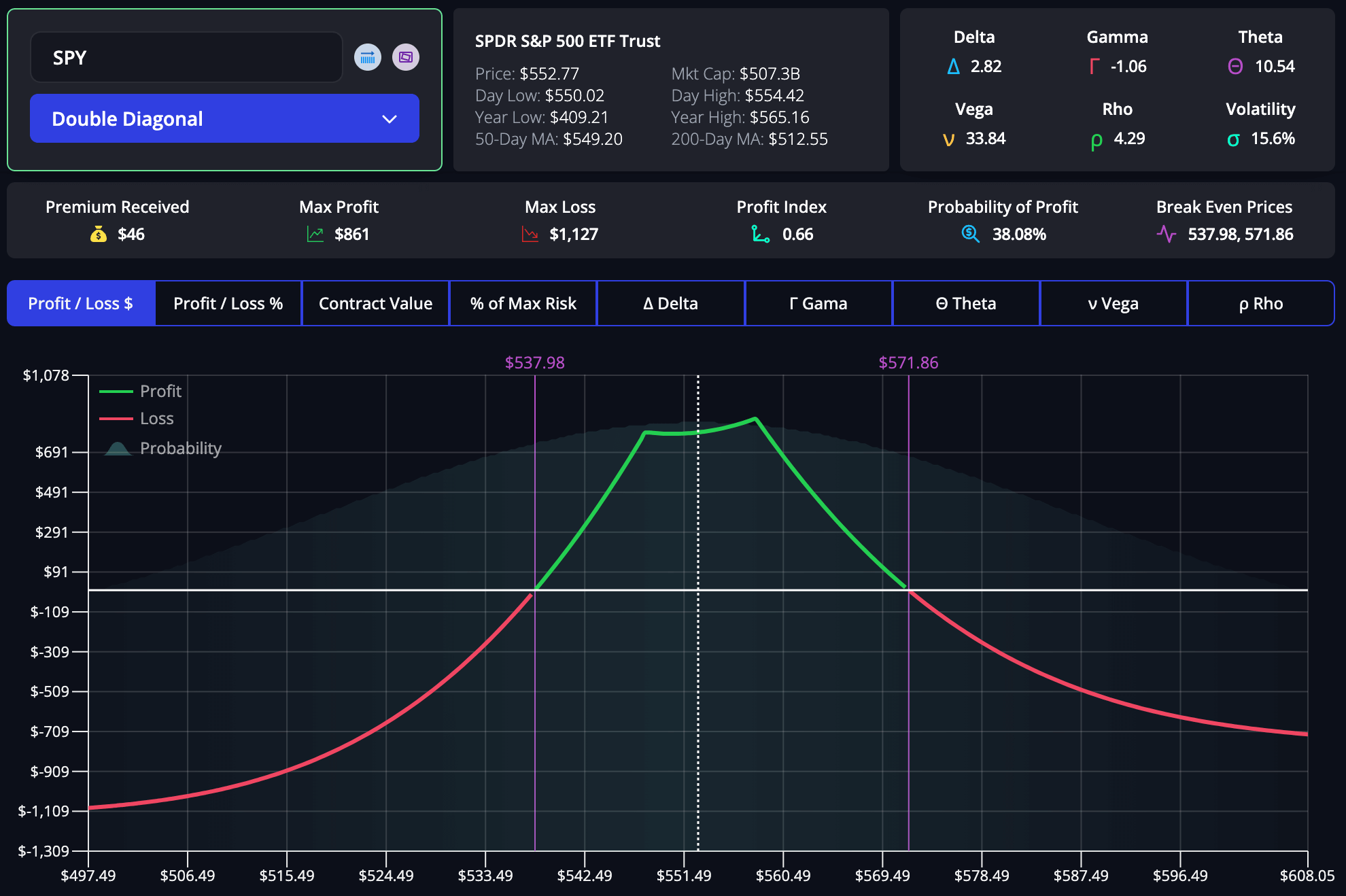How to Maximize Profits with Strike and Expiration

The difference between a winning trade and a losing one often comes down to two critical decisions—strike price and expiration. Are you making the right choices?
In the world of options trading, the decisions you make regarding strike price and expiration can significantly impact the success of your trades. These two factors are not just technicalities; they are fundamental components that determine your potential profit, risk exposure, and the overall outcome of your trading strategy. Understanding how to select the correct strike price and expiration is crucial for achieving consistent, profitable results.
The Importance of Strike Price and Expiration
The strike price defines the price at which you can buy or sell the underlying asset, while the expiration date determines the timeframe in which this option can be exercised. These decisions are intertwined with the market's behavior and your predictions about the underlying asset's movement. Misjudging either can lead to missed opportunities or significant losses, making it vital to approach these choices with careful analysis.
According to a study by the Options Clearing Corporation (OCC), approximately 76% of all options contracts are closed out or expire worthless, which highlights the importance of making informed decisions regarding strike prices and expirations.
This statistic underscores that the majority of options traders are not able to capitalize on their trades, often because they fail to correctly assess the timing (expiration) or price level (strike price) needed for the trade to be profitable.
Impact on Trading Outcomes
Traders who meticulously adjust their strike prices and expirations according to market conditions tend to outperform those who do not. This adjustment allows traders to better align their trades with the underlying asset's potential movement, optimizing their chances for profitability.
A 2019 report from the Chicago Board Options Exchange (CBOE) revealed that traders who regularly adjusted these parameters based on market volatility and asset price trends saw an average increase in their success rates by 15-20% compared to those who maintained a static approach.
Furthermore, historical data shows that traders who select longer expirations during periods of market uncertainty or high volatility are more likely to see their options expire in-the-money.
During the 2020 market volatility caused by the COVID-19 pandemic, options with longer expiration dates had a higher probability of success, as they provided more time for the underlying assets to recover from the short-term market shocks.
Selecting the Strike Price

Selecting the right strike price is a pivotal decision in options trading, as it directly influences the cost, risk, and potential return of the trade. Understanding the nuances of how strike prices affect an option's intrinsic value and probability of profit can help traders make more informed decisions that align with their market outlook and risk tolerance.
Higher Strike Price
Choosing a higher strike price typically results in a cheaper option premium because the option is further out-of-the-money (OTM). This means the underlying asset's current price is below the strike price for a call option or above the strike price for a put option, making it less likely that the option will expire in-the-money. The risk here is higher because the underlying asset must make a significant move in the trader's favor for the option to become profitable.
Lower Strike Price
Conversely, opting for a lower strike price brings the option closer to being in-the-money (ITM), which increases the option's cost but also raises the probability of the option expiring profitably. Lower strike prices mean that the underlying asset doesn't need to move as much to reach the strike price, making it a safer bet but with a higher upfront cost.
How Strike Price Impacts Profitability
The strike price you select in options trading affects both the intrinsic value and the probability of profit. Intrinsic value refers to the difference between the underlying asset's current price and the strike price of the option. An option is said to have intrinsic value when it is in-the-money (ITM). The probability of profit, meanwhile, is the likelihood that the option will expire in-the-money, which is inherently tied to the strike price you choose.
Intrinsic Value and Higher Strike Prices:
Higher strike prices typically result in options that have little to no intrinsic value at the time of purchase, especially if they are out-of-the-money. These options are purely speculative and rely entirely on the underlying asset making a substantial move in the desired direction before expiration. Because of this, they are often cheaper but come with a lower probability of profit.
- A trader purchases a call option at a strike price of $150, with the stock currently trading at $140. The premium for this OTM option is $2.50 per contract. The trader expects the stock to surge due to a favorable earnings report. However, the stock only rises to $145 by expiration. The option expires worthless, resulting in a total loss of the premium paid.
Intrinsic Value and Lower Strike Prices:
Lower strike prices often mean that the option is either at-the-money (ATM) or in-the-money (ITM) at the time of purchase, giving it immediate intrinsic value. These options are more expensive due to their higher probability of expiring profitably, as less movement in the underlying asset is required for the trader to see a return.
- A trader purchases a call option at a strike price of $140, which is ATM. The premium for this option is higher, at $5.00 per contract. As the stock rises to $145 by expiration, the trader can sell the option for $5.00 per contract, breaking even. If the stock had moved to $150, the trader would have seen a profit, highlighting the trade-off between cost and probability of profit.
Out-of-the-Money (OTM) vs. In-the-Money (ITM) Profitability
Selecting the correct strike price is a balance between risk, cost, and the likelihood of profit. Out-of-the-money strike prices offer cheaper options with higher potential rewards but come with significant risks. In-the-money strike prices provide a safer bet with a higher probability of success but at a higher cost.
According to data from the Chicago Board Options Exchange (CBOE), approximately 30% of OTM options expire profitably, compared to 70% of ITM options.
This stark difference highlights the importance of strike price selection. While OTM options offer higher potential returns due to their lower costs, ITM options present a greater probability of success, albeit with lower percentage returns.
HIGH POTENTIAL TRADES SENT DIRECTLY TO YOUR INBOX
Add your email to receive our free daily newsletter. No spam, unsubscribe anytime.
Selecting the Expiration Date

The expiration date of an options contract is a critical factor that influences the trade's potential success. The choice between a shorter or longer expiration date can significantly impact the trade's outcome, dictating the level of risk, the rate of time decay (theta), and the overall strategy a trader should employ.
Shorter Expiration
A shorter expiration period, such as one week or less, introduces a higher degree of urgency to the trade. The time decay, or theta, accelerates as the expiration date approaches, eroding the option's value rapidly. This strategy is often used in situations where the trader expects a quick, significant movement in the underlying asset, such as ahead of an earnings report, a product launch, or a major economic announcement.
Longer Expiration
Longer expirations, such as several months to a year or more, provide more time for the underlying asset to move in the desired direction. This extended period reduces the immediate impact of time decay and is often favored in strategies that are based on long-term trends or expected gradual movements in the market.
How Expiration Date Impacts Trading Strategies
Selecting the appropriate expiration date is not just about the length of time but also about aligning it with the specific trading strategy and market conditions. Different strategies require different expiration dates to maximize the potential for profit while managing risk effectively.
Trading Strategies for Shorter Expirations
- Day Trading and Swing Trading: Traders who engage in day trading or swing trading often prefer shorter expiration dates, typically within days or weeks. These traders capitalize on short-term market movements and volatility. For instance, weekly options are popular for trading around earnings announcements or other market-moving events. The key advantage is the ability to realize gains quickly if the market moves in the expected direction. However, the risk is higher, as time decay accelerates rapidly as expiration nears, leaving little margin for error.
- Event-Driven Strategies: Another common use of shorter expirations is in event-driven strategies, where traders anticipate a specific event (like a merger, regulatory decision, or central bank meeting) will cause a significant price move. Shorter expirations allow traders to position themselves for these moves without the cost of holding long-term options, which may suffer from time decay if the event takes longer to materialize.
Trading Strategies for Longer Expirations
- Trend Following and Long-Term Investments: Traders and investors who focus on long-term trends or macroeconomic shifts often prefer longer expirations. Long-term equity anticipation securities (LEAPS), which are options with expirations up to three years, are ideal for these strategies. LEAPS provide the benefits of options—such as leverage and limited downside risk—while allowing the trader to hold a position for an extended period. This is particularly beneficial in markets where significant price movements are expected over a long horizon, such as during economic cycles or in response to technological advancements.
- Hedging Strategies: Investors often use longer expirations to hedge against potential downturns in the market or to protect gains in a portfolio. For example, a long-term investor might purchase put options with a one-year expiration to protect against a potential decline in a key stock holding. The extended expiration provides protection over a longer period, making it more suitable for hedging against macroeconomic risks.
Performance of Long-Term Options (LEAPS) vs. Short-Term Options
Research conducted by the Chicago Board Options Exchange (CBOE) shows that LEAPS tend to outperform short-term options in stable or gradually trending markets. This is because LEAPS provide more time for the underlying asset to move, reducing the pressure of time decay.
During the bull market of 2020-2021, LEAPS on major indices like the S&P 500 outperformed their short-term counterparts, as the steady market growth allowed these options to appreciate significantly over time.
Conversely, in highly volatile markets or when quick price movements are anticipated, short-term options can deliver substantial gains if the trader's timing is precise. However, the risk of loss is also higher due to the rapid erosion of time value.
Option Expiration Date Scenario Analysis
Choosing the right expiration date is a strategic decision that should be based on your trading style, market conditions, and the specific characteristics of the underlying asset.
Shorter expirations are best suited for those seeking quick results and willing to accept higher risk, while longer expirations offer more time for your trade to develop, reducing the pressure of timing but requiring a more patient approach.
Shorter Expiration Scenario:
A trader purchases a call option with a one-week expiration, expecting a sharp move due to an upcoming FDA approval for the company's new drug. The stock is trading at $120, and the trader selects a $130 strike price. Upon the FDA's positive announcement, the stock jumps to $135, and the option gains significant value. The trader sells before expiration, capitalizing on the short-term spike.
Longer Expiration Scenario:
A trader invests in a LEAPS call option expiring in two years, with the expectation that the company's ongoing R&D efforts will lead to a groundbreaking product launch. The stock is currently trading at $70, and the strike price is set at $80. Over the next year, as the company's developments materialize, the stock climbs steadily to $100. The long expiration allows the trader to hold the option throughout the growth period, eventually selling it for a substantial profit.
By understanding the nuances of expiration selection, traders can better align their trades with market dynamics and their own risk tolerance.
Common Mistakes in Selecting Strike Price and Expiration

Selecting strike prices and expiration dates in options trading requires precision and careful analysis. However, even experienced traders can fall into common traps that lead to significant losses. Understanding these mistakes and how to avoid them can save traders from costly errors.
Mistake 1: Choosing an Expiration Date That Is Too Short in a Volatile Market
One of the most frequent errors traders make is selecting an expiration date that is too short during periods of high market volatility. While shorter expirations can offer quick profits, they can also backfire if the market does not move as expected within the limited timeframe.
Real-World Example: In 2018, during the heightened market volatility caused by the U.S.-China trade tensions, many traders bought short-term options on major tech stocks, expecting quick price movements following trade negotiation announcements. One trader purchased weekly call options on a major semiconductor company, anticipating a positive resolution. However, despite the company’s strong fundamentals, the ongoing uncertainty in trade talks caused the stock to fluctuate wildly without a clear trend. The weekly option expired worthless as the stock remained below the strike price, and the trader lost the entire premium paid.
Lesson Learned: In volatile markets, it’s essential to consider longer expiration dates that provide more time for the underlying asset to reach the strike price. Short-term options can be risky as they are more vulnerable to unpredictable market swings, which can easily render the options worthless before the anticipated move occurs.
Mistake 2: Ignoring the Impact of Time Decay on Out-of-the-Money Options
Time decay, or theta, is a critical factor in options trading, particularly for out-of-the-money (OTM) options. A common mistake is underestimating the speed at which time decay can erode the value of an OTM option, especially as it nears expiration.
Real-World Example: In 2019, a trader purchased OTM call options on a pharmaceutical company that was awaiting FDA approval for a new drug. The stock was trading at $60, and the trader chose a strike price of $75 with a one-month expiration. The approval process, however, was delayed by several weeks due to unforeseen regulatory issues. As the expiration date approached, the value of the options rapidly declined due to time decay, even though the trader still believed in the company’s long-term prospects. The options expired worthless before the FDA announcement, resulting in a total loss for the trader.
Lesson Learned: When trading OTM options, it is crucial to account for the effects of time decay, especially if the expected market move is dependent on external factors like regulatory approvals or earnings reports that might be delayed. In such cases, choosing a longer expiration date can mitigate the risk of time decay and provide a cushion against delays.
Mistake 3: Selecting a Strike Price Based on Cost Alone Without Considering Market Conditions
Another common mistake is choosing a strike price based primarily on the lower cost of the option, without adequately considering the underlying market conditions or the likelihood of the option expiring in-the-money.
Real-World Example: In early 2021, a trader bought deeply out-of-the-money put options on an oil company, with a strike price far below the current trading price. The trader was attracted by the low premium cost, believing that the stock would decline sharply due to a predicted downturn in the oil market. However, the market remained relatively stable, and the stock only experienced minor fluctuations. The chosen strike price was too aggressive, and the options expired worthless, leaving the trader with a loss.
Lesson Learned: While lower-cost options can be appealing, selecting a strike price that is too far out-of-the-money increases the likelihood that the option will expire worthless. It’s important to balance the cost of the option with the probability of the market moving sufficiently to make the option profitable. In stable or slightly volatile markets, a more conservative strike price closer to the current market price can provide a better chance of success.
Mistake 4: Failing to Adjust Expiration Dates Based on Market News and Events
Traders sometimes overlook the importance of adjusting expiration dates in response to new market information or upcoming events. This oversight can lead to options expiring before a significant market move occurs.
Real-World Example: In 2021, a trader bought call options on a major airline company, with an expiration date just a few days before an expected announcement on international travel restrictions. The trader anticipated that the easing of restrictions would boost the airline’s stock price. However, the announcement was delayed, and the options expired just before the positive news was released. The stock soared afterward, but the trader missed out on the profits because the options had already expired.
Lesson Learned: It’s crucial to stay informed about market news and potential events that could affect the underlying asset. If new information suggests that a significant market move might occur after your option’s expiration date, it’s wise to consider rolling the option to a later expiration to capture the anticipated move.
Avoiding these common mistakes requires careful planning, continuous monitoring of market conditions, and a thorough understanding of how strike prices and expiration dates impact options trading. By learning from real-world examples, traders can better navigate the complexities of options trading, minimize losses, and increase their chances of success. Each decision should be made with a clear understanding of the risks involved and an eye toward aligning the option’s parameters with the trader’s overall market outlook and strategy.
Mastering the Art of Options Trading

In the intricate world of options trading, the decisions you make about strike prices and expiration dates are more than just technical details—they are the cornerstone of your trading strategy. By avoiding common pitfalls and understanding how to align these choices with your market outlook, you can significantly enhance your chances of success. The power to make informed, strategic decisions is what sets successful traders apart from the rest.
But even the most experienced traders know that the market can be unpredictable, and having the right tools at your disposal can make all the difference. This is where the InsiderFinance Options Profit Calculator comes into play. Designed to help you navigate the complexities of options trading, this tool is an indispensable asset for traders at any level.
Benefits of Using the InsiderFinance Options Profit Calculator
- Precise Strike Price Analysis: Quickly analyze different strike prices to see how they impact your potential profit and risk, ensuring that you choose the best strike price for your strategy.
- Optimized Expiration Date Selection: Determine the most favorable expiration date by comparing the impact of time decay across different options, helping you to avoid costly mistakes in volatile markets.
- Scenario Planning: Model various market scenarios, including different levels of volatility and price movements, to see how your trade might perform under various conditions.
- Instant Risk-Reward Assessment: Get an immediate understanding of the risk and reward profile of any options trade, allowing you to make informed decisions quickly and confidently.
- Enhanced Decision-Making: With real-time data and advanced analytics, you can make smarter, faster decisions that align with your trading goals and market conditions.
These benefits make the InsiderFinance Options Profit Calculator an essential tool for anyone serious about mastering options trading. By incorporating this powerful tool into your trading strategy, you'll be better equipped to navigate the complexities of the market and achieve consistent success.
Take Control of Your Trading Journey
Your path to becoming a successful options trader starts with the right decisions and the right tools. Don’t leave your trades to chance—empower yourself with the InsiderFinance Options Profit Calculator and take control of your trading journey.
Ready to elevate your trading strategy? Try the InsiderFinance Options Profit Calculator today and start making informed, profitable decisions with confidence.
HIGH POTENTIAL TRADES SENT DIRECTLY TO YOUR INBOX
Add your email to receive our free daily newsletter. No spam, unsubscribe anytime.
FAQs
What is the best strike price for options trading?
The best strike price depends on your market outlook and risk tolerance. Learn how to choose the right strike price for your trading strategy.
How do expiration dates affect options trading?
Expiration dates impact time decay and risk. Find out how to select the optimal expiration date to align with market conditions.
What are the differences between OTM and ITM options?
OTM options are cheaper but riskier, while ITM options have higher premiums but better chances of profit. Discover which is right for you.
How does time decay impact options prices?
Time decay, or theta, reduces options value as expiration nears. Learn how to manage time decay when trading options.
Why do most options expire worthless?
Many options expire worthless due to poor timing or incorrect strike price selection. Find strategies to avoid this common mistake.
When should I choose a longer expiration date for options?
Longer expirations are ideal for volatile markets or long-term trends. Learn when to opt for longer dates to maximize profits.
How do I choose the right strike price for options?
Choosing the right strike price involves balancing cost and probability of profit. Get tips for selecting the perfect strike price.
What are the risks of choosing a short expiration date in options?
Short expirations increase the risk of rapid time decay. Learn how to avoid the pitfalls of choosing too short an expiration.
What is the InsiderFinance Options Profit Calculator?
A tool that helps traders optimize strike prices and expiration dates. Discover how it can enhance your options trading strategy.
How can I avoid common mistakes in options trading?
Avoid common errors like selecting the wrong strike price or expiration date. Learn tips for making smarter options trading decisions.








